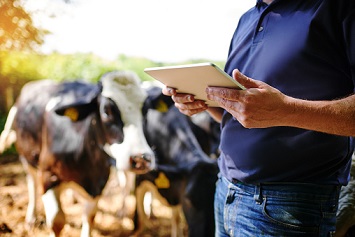The EPA is proposing to extend an existing reporting exemption under the Comprehensive Environmental Response, Compensation, and Liability Act (CERCLA) to release notification rules under the Emergency Planning and Community Right-to-Know Act (EPCRA). The CERCLA extension applies to air emissions from animal waste at farms.
In the proposal, the EPA argues that reporting requirements under EPCRA are so dependent of what must be reported under CERCLA that it is appropriate to extend the exemption to EPCRA’s regulations.
Background
For years, farms were legally required by CERCLA to report to the National Response Center (NRC) any release of a CERCLA hazardous substance within a 24-hour period in an amount equal to or greater than the reportable quantity (RQ) for that substance. Farmers argued that air releases of substances such as ammonia and hydrogen sulfide from animal waste posed no threat to human health. Emergency responders tended to agree, and there were very few, if any, instances where an air release from animal waste at a farm prompted an emergency response from federal authorities.
Congress finally addressed the issue, and in March 2018, President Donald Trump signed the Omnibus Bill, which included the Fair Agricultural Reporting Method (FARM) Act. This legislation expressly exempts reporting of air emissions from animal waste at a farm under CERCLA Section 103. The FARM Act also provides definitions for the terms animal waste and farm.
The CERCLA-EPCRA Relationship
While CERCLA requires entities to report releases of hazardous substances to the NRC, EPCRA requires owners or operators of certain facilities to immediately notify state and local authorities when there is a release of an extremely hazardous substance (EHS), as defined under EPCRA Section 302, or of a CERCLA hazardous substance in an amount equal to or greater than the RQ for that substance within a 24-hour period.
In its proposal, the EPA emphasizes the close relationship between reporting under CERCLA and EPCRA. The Agency states:
“This proposed rule maintains consistency between the emergency release notification requirements of EPCRA and CERCLA in accordance with the statutory text, framework, and legislative history of EPCRA, and is consistent with the Agency’s prior regulatory actions. Specifically, this proposed rule is based on the relationship of the EPCRA section 304 reporting requirements to the CERCLA section 103 reporting requirements, as recently amended. EPCRA section 304 reporting depends, in part, on whether reporting is required under CERCLA section 103. EPCRA’s legislative history further indicates that the EPCRA section 304 reporting requirements are designed to be consistent with the reporting requirements of CERCLA section 103. EPA has thus revised the EPCRA emergency release notification regulations from time to time, as appropriate, to maintain consistency with the CERCLA reporting requirements.”
Manner of Release
Importantly, the CERCLA reporting exemption is specifically linked to the nature or manner of releases rather than to a specific substance. For example, the recent CERCLA amendment does not exempt specific substances such as ammonia and hydrogen sulfide typically associated with animal waste from reporting; rather, it exempts from reporting releases of any substance from animal waste at a farm into the air. A release from animal waste into water (e.g., a lagoon breach) or a release from an anhydrous ammonia storage tank (i.e., not a release from animal waste) into the air might trigger reporting requirements if the release exceeds the applicable reportable quantities.
Definitions
The proposal would also add these two definitions to EPCRA regulations:
- Animal waste means feces, urine, or other excrement, digestive emissions, urea, or similar substances emitted by animals (including any form of livestock, poultry, or fish). The term animal waste includes animal waste that is mixed or commingled with bedding, compost, feed, soil, or any other material typically found with such waste.
- Farm means a site or area (including associated structures) that:
- Is used for (i) the production of a crop; or (ii) the raising or selling of animals (including any form of livestock, poultry, or fish); and
- Under normal conditions, produces during a farm year any agricultural products with a total value equal to not less than $1,000.
The prepublication version of the EPA’s proposal is available here.

